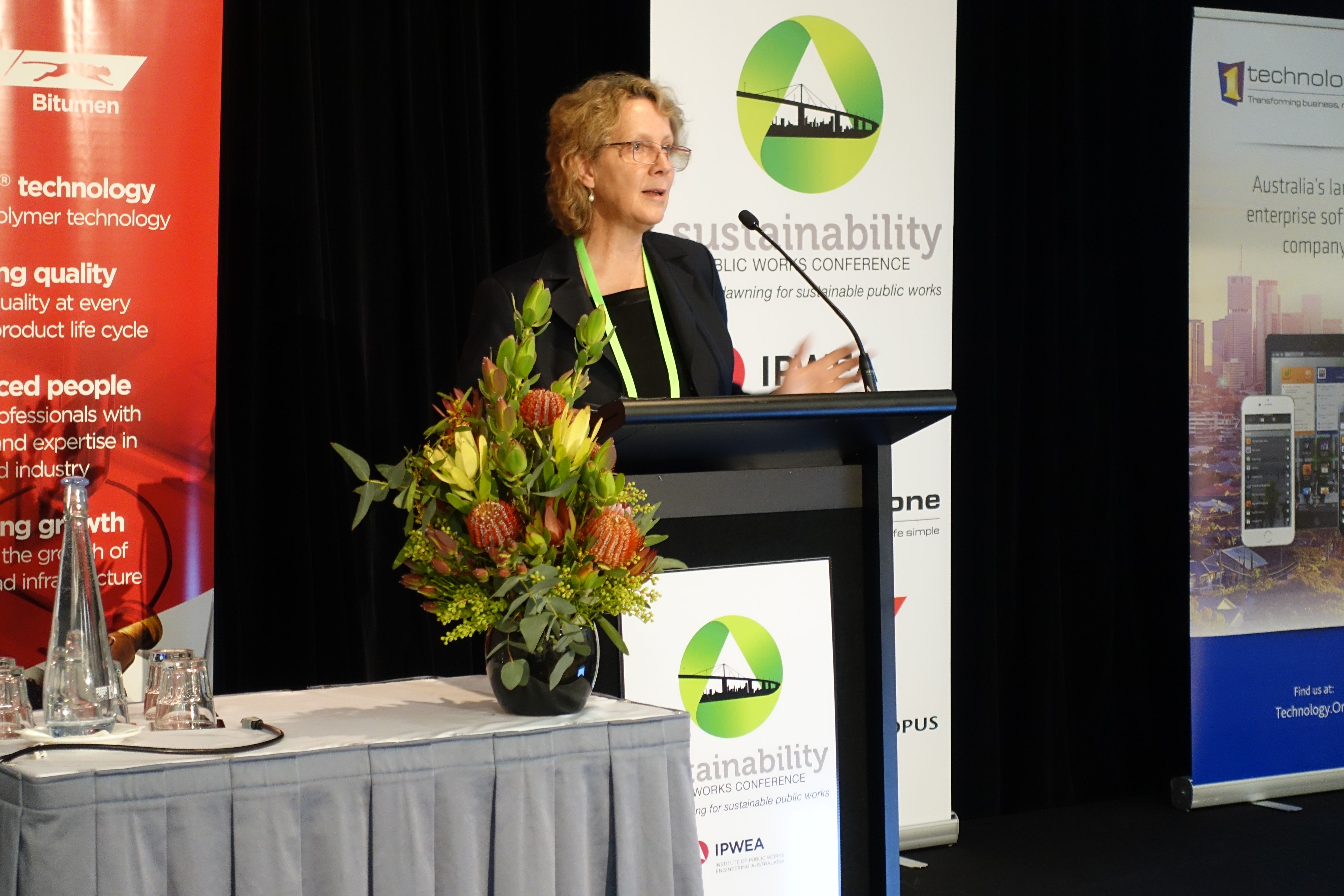Day two of Sustainability in Public Works kicked off with a presentation from Professor Barbara Norman, Director of Canberra Urban and Regional Futures at the University of Canberra. Norman spoke about how urban planning can address sustainability and climate resilience goals.
Here are some of the key insights from her presentation:
1. Solutions to climate change must start in the cities
By the year 2050, planet earth will be home to 10 billion people – and many of those people will live in cities. Because of this, Norman says innovations in sustainability need to focus on these urban centres.
 “Our urban centres have been growing at a rapid rate,” she says.
“Our urban centres have been growing at a rapid rate,” she says.
“City of Sydney is taking this on very seriously now, because it’s becoming less liveable, and Melbourne needs to focus on this now.”
It’s all about transforming cities, Norman says.
“It’s not business as usual – we are going to have to switch from a car-driven city to a public transport driven city,” she explains.
“Cities need to be liveable, and we need to allow more development in areas that are of low risk in the future.”
2. There are limits to adaptation
Norman says she frequently hears the opinion that adaptation will be a solution to all climate change-related disasters, such as increasing temperatures and coastal erosion.
Contrary to this belief, Norman says adaptation is only effective to a point and should not be relied on.
3. It’s not if, but when
Some things, like rising temperatures and rising sea levels are inevitable, and asset managers must plan accordingly, Norman says.
“The Gold Coast is the one thing that keeps me awake at night – an extreme event is inevitable in the future,” Norman says.
“If you get a convergence of events, a big downpour and a storm surge, there’s a very narrow piece of land there, and a significant risk.
“Incorporating these risks into your public works is absolutely critical. “
4. We need an integrated approach
It’s not enough for individual councils or even states to work toward sustainability goals, Norman says.
“We need a national approach to these goals,” she explains.
“We need some national guidelines that can work with state and local governments.”
However, actions within individual organisations are still vital.
“Introduce very simple measures, connected to outcomes, and start to have a cultural change,” Norman advises.
“Provide your staff with opportunities to come to conferences like this, where they can learn.”
5. Pricing strategies work – but not always the way you think they will
Norman says pricing strategies are a highly effective way to change behaviours and achieve sustainable outcomes. She gave the example from Canberra, where paid parking introduced for public servants resulted in a sharp decrease in the number of car trips in the area.
Norman says while they expected most people would use buses as alternative transport, the highest modes of transport that actually increased were cycling and car pooling.
6. Green infrastructure is crucial
“For a hotter future, shade will be critical,” Norman says. “I think we need to look at green precincts, and a much more integrated approach to our suburbs. We can decarbonise our environment, but we also have to make it liveable.”
7. It can be done
Transforming cities can sound daunting – but there are case studies that prove it is possible.
“Canberra is on track now to produce 100% renewable energy by 2020,” Norman says. “It’s of relevance to all the smaller cities. Over 90% of the community supports what’s happening.”
“It can be done – it’s not about rhetoric or global goals.”